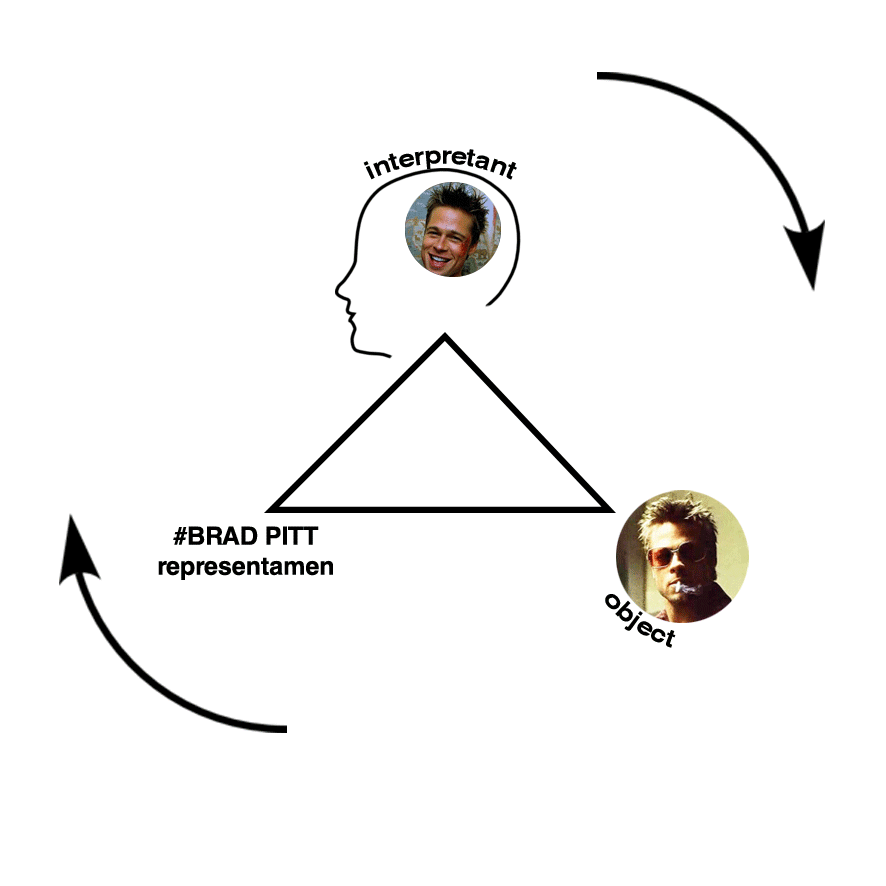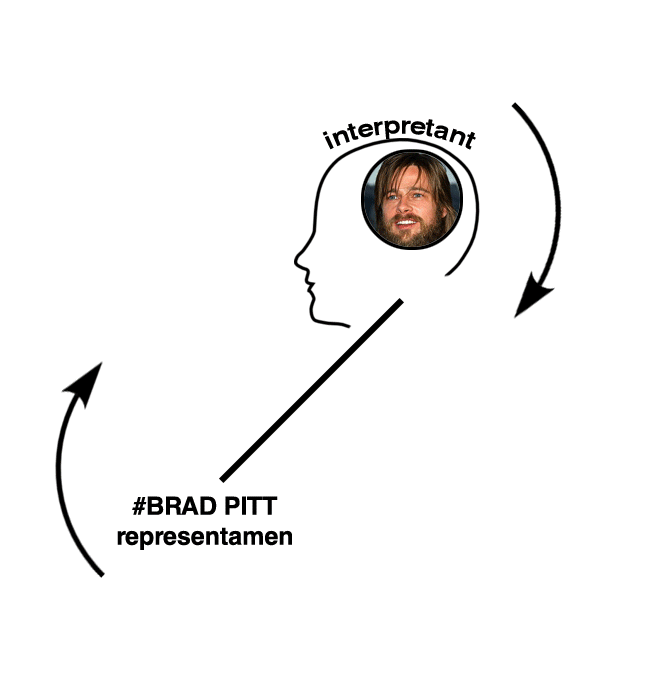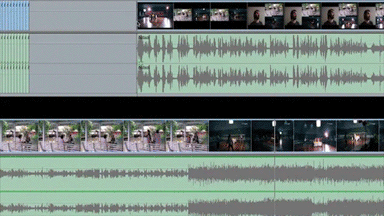Let's start with sir Michael Caine. The pledge, the turn, the prestige - three components of a magic trick introduced to suspend your disbelief, to remove obstacles on you way to immersion. In cinema that could be roughly translated into projection/identification, dramaturgy and climax. We think we watch, but very often we just receive images and let ourselves flow with them. And it's good and it feels almost like a dream - with its condenstation and displacement. That's how the magic works, but its not how you learn it.
Now you're looking for the secret. But you won't find it because of course, you're not really looking.
- says Michael Caine.
And I plea for you to look, speaking in unison with Allen Ginsberg: The method must be purest meat / and no symbolic dressing / actual visions & actual prisons / as seen then and now. My way is the way of a failed magician - I throw my tricks at you in order to expose their inner working. Then and now - says the poet tackling one of the biggest problems of classical textual analysis, since meanings aren't established once and for all. They are being constantly negotiated. Nevertheless, the prevailing attitude in film studies and other disciplines concerned with visual phenomena is convergent with Freud's early attitude towards dreams (and many analogies between those and movies can be easily found):
The dream-thoughts are immediately comprehensible, as soon as we have learnt them. The dream-content, on the other hand, is expressed as it were in a pictograph script, the characters of which have to be transposed individually into the language of the dream-thoughts. If we attempted to read these characters according to their pictorial value instead of according to their symbolic relation, we should clearly be led into error. Suppose I have a picture-puzzle, a rebus, in front of me [...] Now I might be misled into raising objections and declaring that the picture as a whole and its component parts are nonsensical [...] But obviously we can only form a proper judgment of the rebus if we put aside criticisms such as these of the whole composition and its parts and if, instead, we try to replace each separate element in some way or other. The words which are put together in this way are no longer nonsensical but may form a poetical phrase of the greatest beauty and significance. A dream is a picture-puzzle of this sort and our predecessors in the field of dream-interpretation have made the mistake of treating the rebus as a pictorial composition: and as such it has seemed to them nonsensical and worthless.
I promise it's the last time I paste such an extensive quote, but it's necessary to explain the mechanism of this whole review, that was intended as a self-referential methodological statement. Do you still remember the rebus from the very beginning?



roll your mouse over
My methodological standpoint is the exact opposite of Freud's from the passage above. I don't see images as rebuses which can be solved, whose meanings can be extracted for good. In a way, two previous chapters were intended to challange this one image that claims (after deciphering) to be the whole "critical review".
There are three main principles organizing my research and project that I was trying to employ and review here so far:

I. MORPHOLOGY (of the image)
The term itself was borrowed from a French art historian Georges Didi-Huberman but refers to a broader assumption that signification is an ongoing process (especially when it comes to images). Images, and especially moving images stand before us in all their vastness and complexity and every time we look at them we make choices. We mediate between what we see, what we know and remember. And then the image is gone - in cinema it simply dies 24 times per second. The diagram on your right presents this process in Charles Sander Peirce's terms. Our perception of images is a constant negotation between images (object) themselves, concepts they evoke (representamen) and all the associations we have with them (interpretant or #BradPittNESS)

In classical analysis we remove the object from the equation. We IDEALIZE it (we petrify and fix it as an idea). Removing the object from equation casts us in a situation presented on your left. The problem is, that it is still a perfectly meaningful arrangement that we might call symbolic. My words trigger concepts and associations in your head, so you may still comprehend the text. Nevertheless, the question remains - Is it a good model for film/visual analysis?
My answer is no. Referring back to Allen Ginsberg's line quoted above - I want to confront actual visions [...] as seen then and now. I struggle to bring back objects to the very activity of analysis (working with actual images and sounds) and presentation. So you might access my THEN (the moment) of analysis in your NOW and follow the process with me. Or against me.
II. SITUATEDNESS (of knowledge)
Contesting positivist or idealist approach to knowledge production one has to accept a possibility of parallel explanations formulated from different points of view. You no longer provide an objective CONTEXT but FRAME your objects accordingly to your goals, methodology and position. The term itself comes from Donna Haraway's Cyborg Manifesto, where she's opposing masculine OBJECTIVE modes of knowledge production, with feminist SITUATADNESS. Making long story short - knowledge always comes from a viewpoint, it is situated in a certain THEN, formulated by a certain WHO, answering to certain WHY, within certain HOW.
look here for clarification


From the very beginning I was trying to give you an idea of who I am and where I'm coming from. You got a glimpse of how I look, how I speak (you may relisten that by clicking on a "play" icon on your left), how I write (in English). Most importantly, though, I was trying to keep you aware of all the actions I was trying to perform.
You could agree with my argumentation or not, but I wanted to create an impression that you agree/disagree with ME and prepare some room for you to think alongside. I hope that this line of autoquestioning made you more aware of your own mind processes as well. Since, THINKING YOUR OBJECT this way always implies THINKING METHODOLOGY as well.
III. WORD-IMAGE / METAIMAGE
The underlying claim of this project is aimed at iconoclastic diregard of images. I do believe that Images, sounds and tactile sensations can signify and produce valuable knowledge. Does that make me an idolater? Looking for a strong theoretical foundation in a multimedial project like this, you often verge on extremes. Arguing with Plato's praise of IDEAS and condemnation of IMAGES, one might easily fall into the direct opposite. As philisophers argue, though, the film itself continues its convergent audiovisual existence undisturbed. The "word-image" is a working concept describing the attitude that equals perceptual and conceptual as they're both constantly present in the PROCESS of signification. Inclusion of one doesn't have to entail isolation of the other. Designing animated gifs, popping-up images, sounds, videos and text for this review, I was counting on their interplay. Thus, the whole argument presented in this work cannot be sustained without any of those elements! My aim is to produce "texts' that call for close analysis, that urge you to slow down the reception of image, to sharpen your hearing and encourage suspicion.
In media/film studies that calls for (as Catherine Grant put it in her editorial introduction of [In]Transition - first peer reviewed vide-essayistic journal):
exploration of the ways in which digital technologies afford a new mode of carrying out and presenting research", since "the full range of digital technologies now enables film and media scholars to write using the very materials that constitute their objects of study: moving images and sounds.
Kevin B. Lee's digressions
on what makes video essays great

excerpt from Kevin B Lee's INTERFACE 2.0
Due to the accesibility of editing software and file-sharing sites, we're now able to preserve characteristics of films in our critical inquiries of them (and thus, we may recreate the process of analysis itself). This interface, for example, enables me to move images/videos/sounds from their original sources, juxtapose them with each other and present it to you in a comprehensive form (therefore, it fullfills Bruno Latour's requirements of good inscription).
That leads us to the METAPICTURE, whose widest implication in W.J.T. Mitchell's words is:
that pictures might themselves be sites of theoretical discourse, not merely passive objects awaiting explanation by some non-pictorial (or iconoclastic) master-discourse. In relation to the domesticating tendencies of semiotics, for instance, with its taxonomies of signs and sign-functions, I like to think of the image as the "wild sign," the signifying entity that has the potential to explode signification, to open up the realm of nonsense, madness, randomness, anarchy, and even "nature" itself in the midst of the cultural labyrinth of second nature that human beings create around themselves.
Encompassing those forms in Academia, however, would not only require new skills but also an inclusion of additional types of insight under the term of knowledge. Our task now is to develop a place in Artistic Research field for Max Bense’s essayist who: “Is a combiner, a tireless producer of configurations around a specific object (…)” For whom: “Configuration is an epistemological arrangement which cannot be achieved through axiomatic deduction, but only through Ars Combinatoria in which imagination replaces knowledge?



